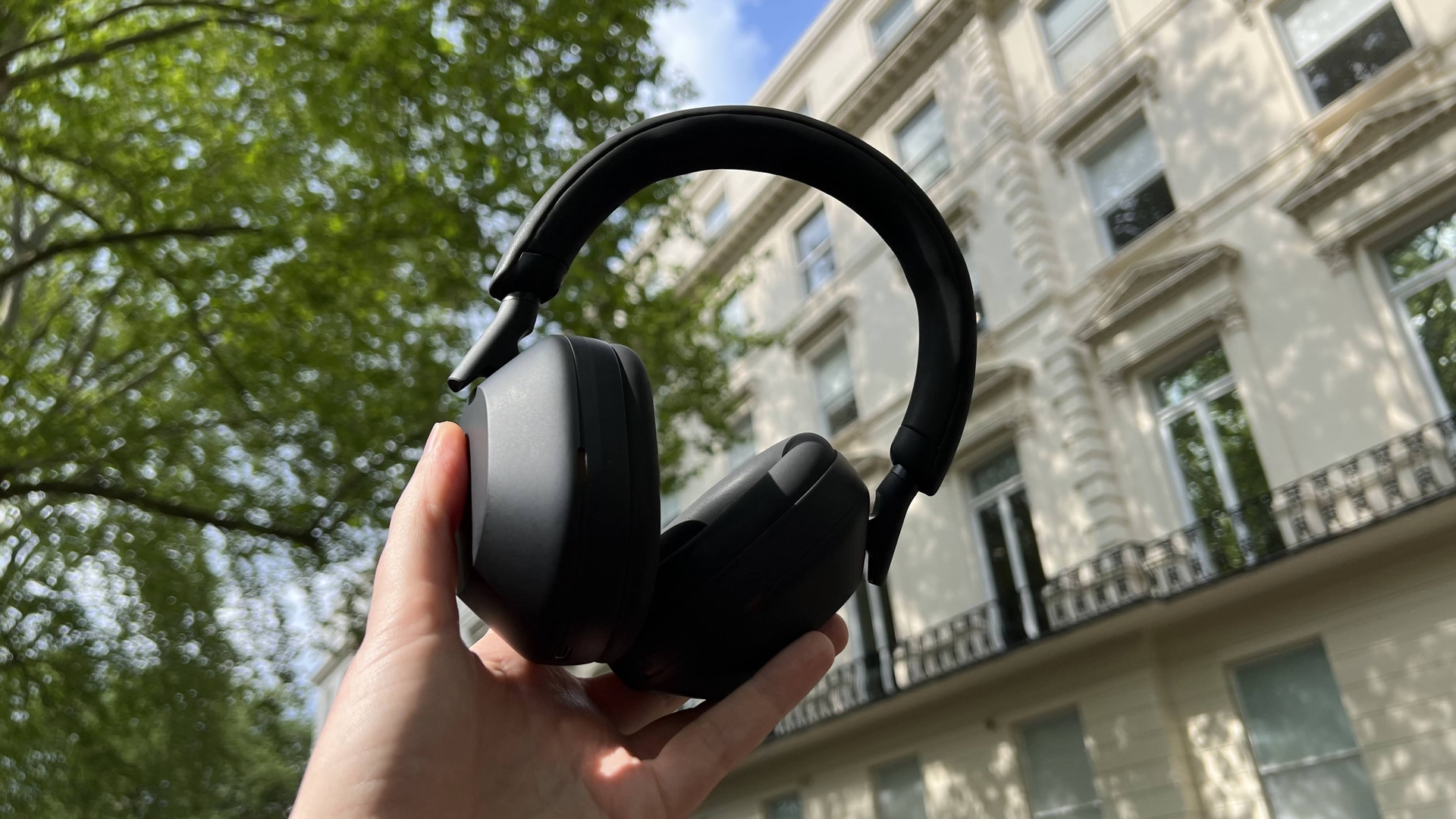
When designing a pair of noise-cancelling headphones like the Sony WH-1000XM5, there are a million considerations that need to be made. For starters, you need to design around sound quality with quality drivers and built-in amplifiers. You need at least a single processor to decode incoming information over Bluetooth and handle the intricacies of hearing ambient noise and calculating counter waves to cancel it out. You’ll need a battery to power the whole thing, obviously, and an app that can talk to the headphones.
The Sony WH-1000XM5 has all those things, many of which are among the highest quality we’ve seen on a pair of wireless headphones, perhaps only rivalled by Sony’s previous flagship headphones, the Sony WH-1000XM4, and the Bose QuietComfort 45.
It can appear, at first glance, that Sony might have painted itself into a corner. By producing a pair of headphones so great last year - and again this year - it has inadvertently made it hard to actually innovate year-on-year.
But how does one become more silent than pure silence? What happens when you’ve reached the limitations of sound reproduction over wireless connectivity? These are now the problems Sony finds itself facing.
How does noise cancellation work and why is Sony so good at it?
Noise cancellation technology is nothing new and works on a pretty simple mathematical principle - sound, in the form of waves, has a wavelength and in order to ‘cancel’ incoming sound all you need to do is generate a second soundwave that’s phase-inverted by 180 degrees to block the unwanted noise.
How effective a pair of headphones are at this comes down to how precise the microphones are that pick up the incoming ambient noise, how fast and how powerful a counter wave can be generated from the headphones and how good of a seal the headphones create with the ear to eliminate outgoing or incoming sound leakage.
To make its noise cancellation top-notch Sony has doubled the amount of microphones in the Sony WH-1000XM5 from four to eight and added a second dedicated processor in the form of the Sony V1. Two processors working in tandem help reduce the amount of audible noise in the midrange and the high-end audio spectrum significantly while keeping low-end noises like jet engines at bay.
Get daily insight, inspiration and deals in your inbox
Sign up for breaking news, reviews, opinion, top tech deals, and more.
This doesn’t mean that the Sony WH-1000XM5 can create perfect silence - they can’t. If you wear them outside when you’re mowing the grass, you’ll still be able to hear the mower at your feet. If you wear them and someone is playing an instrument right next to you (say, for example, a ukulele that you use to annoy your girlfriend while she’s working), you’ll still be able to hear that instrument over that music.
Sony hasn’t quite reached pure silence yet, but in the next few years it will be awfully close and then, finally, it will need to chart a new course for noise-cancelling headphones.

Looking ahead at the future
As we inch ever closer to perfect noise cancellation, Sony will have to look elsewhere for innovation, potentially in better sound reproduction, comfort, utility and features. So where does Sony go next? Based on what we’ve seen over the last year, innovation for the company has taken a number of forms.
For its true wireless earbuds lineup, it’s nixed the idea of noise cancellation altogether with the Sony LinkBuds. These entirely open true wireless earbuds allow users to hear what’s going on around them rather than block out incoming noise. It's a different direction than Sony's noise cancelling WF-1000XM4, and it's one way Sony's shown it's willing to think outside the box.
For spatial audio, Sony has invested some serious money in 360 Reality Audio, a proprietary format created by Sony that’s specifically designed to work with compatible Sony speakers (like the Sony SRS-RA5000) and soundbars like the Sony HT-A7000.
Increasing the strength and convenience of using 360 Reality Audio are two places where the company could still improve in the future.
Incorporating spatial audio seems to be high on Sony’s list for future headphones - the Sony WH-1000XM4 and new WH-1000XM5 both support the format already - but increasing the strength and convenience of using 360 Reality Audio are two places where the company could still improve in the future.
Finally, Sony will have to figure out how to push the needle forward on sound quality over wireless standards. A few years back at CES, Sony unveiled LDAC, a new codex that could greatly increase the amount of data transmitted over Bluetooth. Standard SBC that is available on all Bluetooth devices only supports a max bandwidth of 320 kbps, but LDAC - available only on Sony devices - ups the bandwidth to 990kbps.
While LDAC has been a huge boon for Sony’s flagship headphones, it’s still not at the place where CDs are (1411kbps) or anywhere close to the recording limit of 24-bit/192kHz files that have a bitrate of 9216kbps. LDAC is the starting point for something bigger, but clearly there’s even more room to grow.
To that end, while Sony has brought better noise cancellation with each new iteration of its headphones and will soon be nearing the limit of the technology, it still has other areas that can be improved to keep its WH-1000X series the king of the castle for a few more years.
Nick Pino is Managing Editor, TV and AV for TechRadar's sister site, Tom's Guide. Previously, he was the Senior Editor of Home Entertainment at TechRadar, covering TVs, headphones, speakers, video games, VR and streaming devices. He's also written for GamesRadar+, Official Xbox Magazine, PC Gamer and other outlets over the last decade, and he has a degree in computer science he's not using if anyone wants it.
